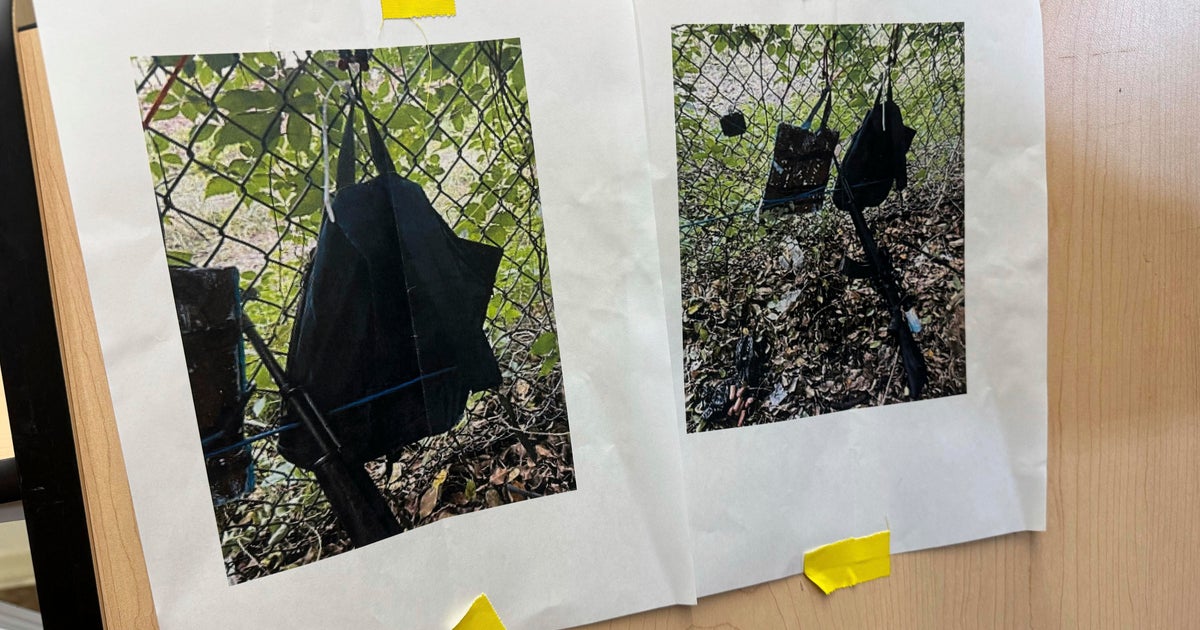Star Tribune
Leaving surgical objects in patients is a rare but growing problem in Minnesota

Joel Meyer was hopeful after leaving a Duluth hospital where doctors had just removed all traces of cancer from his colon and liver. Then he doubled over in agony during the drive home and made his wife stop their car so he could throw up.
Two days later, the pain wasn’t going away and Meyer couldn’t eat anything, so he went to the closest hospital in Brainerd. An imaging scan revealed a surprise: A thin, rolled-up surgical sponge had been left inside his pelvis.
How much it contributed to post-surgery complications remains in dispute, even after a jury awarded $2 million this month to the Meyer family in a personal injury lawsuit filed in state court against Duluth-based Essentia Health. But nobody disputes the error — the sponge stands out like a tiny windsock across the scan of his pelvis — or that it’s happening more frequently in Minnesota hospitals.
“The doctors apologized and said this should have never happened,” said Meyer’s wife, Heather, recalling a meeting with Essentia leaders after the mishap in July 2021. “It’s what they call a ‘never event.'”
Minnesota has been working for two decades to eliminate incidents of retained objects in surgeries, which shouldn’t happen if steps are taken to count and confirm all items placed in patients and then removed.
The state was the first in the U.S. to publicly report hospitals by name when they made mistakes like this, and at one point the effort was paying off. Incidents of retained foreign objects declined from 42 in 2006 to 22 in 2015.
Which made it all the more disappointing last month when the state reported a record 44 incidents in the 12 months ending October 2023. The events remain rare when compared with the half-million procedures performed in the state’s hospitals and surgery centers each year, but that might be part of the problem.
Carelessness can seep in when doctors and nurses do the same safety practices, time after time, without incident, said Rachel Jokela, who directs Minnesota’s adverse event reporting system. The system tracks reports of retained foreign objects, but also 25 other preventable medical errors.
Sponge counts may only be done by one person rather than two, or done hastily or prematurely, she said. When new doctors or nurses take over prolonged surgeries, the outgoing teams may not adequately inform them of objects inside patients.
“There is just this drift in that rigor of the counting of items,” Jokela said. “Each one of these retained foreign objects [events] is a person, a patient who is impacted. So we are definitely taking these things seriously. We do believe they are avoidable.”
Since 2004, Minnesota has documented more than 640 cases of retained objects, including one that caused a patient death. Most of the 97 serious injuries in these cases have been reported since 2020, when Minnesota reminded hospitals that the definition applies when corrective surgeries are needed to remove sponges, needles or other objects.
Some cases involve device fragments that break inside patients. Others involve “packed” sponges or items that are purposefully left during recoveries in patients, but then forgotten.
No institution has a perfect record. Mayo Clinic in Rochester gained another honor as a U.S. World and News Report top hospital, but has reported more than 70 cases of retained objects over the years.
Essentia has reported 13 cases since 2004 at St. Mary’s Medical Center in Duluth, where Meyer, 70, received his operation after his diagnosis of metastatic colon cancer. The health system in a statement expressed regret over “the toll this complex medical journey has taken on Mr. Meyer and his family. When we recognized there was a retained sponge, we took swift and thorough action to resolve the situation.”
The Meyers sued after the apology meeting, when Heather said Essentia leaders told her they would follow state guidance and waive medical costs of correcting the mistake. Heather said she was given two $10 gas cards at the meeting for her time and transportation, and felt the response was inadequate.
The Meyers have been left to speculate what caused the mistake, even after court depositions and the trial that ended July 3.
Two surgeons worked consecutively to remove tumors from Meyer’s colon and liver, said Mike Lammers, the Meyers’ attorney. “Our best guess is that they didn’t account for a sponge that the second surgeon added to the operating field, but it could also be as simple as they didn’t actually count and verify correctly” the number of sponges that were used, he said.
Essentia, like many hospitals, requires two people in a procedure to count sponges and other items going in and out of patients. All items are identifiable through X-ray, which is used when the counts turn up discrepancies. Essentia argued in court records that the sponge counts in Meyer’s surgery were consistent and that usual safety procedures were followed.
Rather than focus on the error, the trial mostly explored Meyer’s complications following surgery and whether the retained sponge caused them. A septic bloodstream infection left him hospitalized and was so severe that he was hallucinating and at one point had a nearly fatal drop in blood pressure.
Essentia contended in court that the problems stemmed from a more common and less preventable complication: a leak where surgeons stitched his liver back together. They asserted that Meyer’s smoking and alcohol usage years earlier, along with recent chemotherapy and other factors, put him more at risk.
Meyer ran his own construction company in Nisswa, Minn., until retirement. He and his attorney argued that problems after surgery occurred near the retained sponge, where doctors discovered a swollen lump of dark fluid that suggested infection.
“That thing was so clouded over with bacteria and dried blood” when it was removed, Meyer said. “That was telltale right there.”
The jury may have been swayed by both arguments, awarding $2 million to the Meyers because of the hospital’s liability. But the Meyers and their attorneys had anticipated more.
St. Mary’s has reported zero retained surgical items since that time, despite the statewide increase. Essentia in its statement said that “events involving retained foreign objects are rare. Regardless, we continually evaluate and refine our processes to prevent them.”
All adverse events in Minnesota are investigated for their root causes, with the lessons relayed to other hospitals to prevent similar errors and harm to patients.
The case gained attention last year, when Heather Meyer testified to the Legislature about the need for a state survivorship law that passes awards to spouses if injured people die amid lawsuits. The Meyers said they struggled to find an attorney to represent them because of the risk that Joel would die.
Recovery was slow. Meyer could barely get off the couch, but then managed 100 steps with a walker in his driveway, then 200. Now Meyer said he is close to full strength, though he is undergoing chemotherapy to target spots in his lungs.
Veterans benefits covered his medical expenses up front, but now Meyer said he is being asked to reimburse some costs, and he is uncertain of the financial toll. The Meyers are waiting to see if Essentia pays $2 million or appeals the decision.
Star Tribune
Inline skater dies after Duluth marathon

A participant in an inline skating race held Saturday on Saturday died following the race, race officials announced on a Facebook page Sunday.
Mike Lufholm, 36, of Minneapolis, was remembered in Northshore Inline Marathon organizers’ Facebook post as an active member of the rollerblading community. He died following an apparent medical incident at the race course.
“Mike was a true ambassador for inline skating with a passion for the sport,” one commenter said. Another recalled seeing him in Duluth before the race with his wife and newborn daughter Friday.
Lufholm grew up in northern Minnesota and began skating in middle school, according to his team member profile on Rollerblade.com.
Race officials thanked participants who came to Lufholm’s aid, first responders and medical professionals who helped provide care.
“Our hearts go out to his wife, daughter, family, and all those who were close to him. He made such an impact on the rollerblading community,” the Facebook post said.
Star Tribune
Wood Lake wildfire in Minnesota’s BWCAW partly contained

A 27-acre wildfire believed to be caused by human activity near Ely in the Boundary Waters Canoe Area Wilderness was 25% contained Sunday morning, according to the U.S. Forest Service.
The Wood Lake fire was discovered around 10 a.m. Tuesday on an island on Wood Lake, a news release from the U.S. Forest Service-Superior National Forest said. It caused the closure of an entry point on the lake, as well as several nearby lakes and portages.
“Firefighters made good progress yesterday with higher humidity levels, continuing to reinforce the fire’s containment line,” the news release said Sunday, noting that firefighters are making contingency plans around Moose Lake.
Firefighters from Connecticut are assisting in fighting the fire.
The fire is under investigation, and Superior National Forest law enforcement are seeking any information about how the fire started.
Star Tribune
MN SWAT officers shoot, wound man during hourslong standoff
A sheriff’s deputy wounded a man during a standoff in western Minnesota early Sunday.
The Yellow Medicine County Sheriff’s Office was called for a welfare check at a house near Clarkfield, south of Montevideo, Saturday afternoon, the agency said in a news release. When officers arrived, the man they meant to check on fled into a farm field with a rifle, the release said.
Sheriff’s deputies rushed neighbors out of the house next to the field, and said the man pointed his rifle at them before running into the just-vacated house.
Deputies surrounded the house and tried to talk to the person, but called a SWAT team when they could not persuade him to come outside. Members of the Kandiyohi-Meeker-Willmar SWAT team arrived and also tried to talk the person out of the house.
The man fired at the SWAT team, according to the sheriff’s office. A member of that SWAT team shot back, hitting the man in the leg. The standoff continued.
Two other SWAT teams relieved the Kandiyohi-Meeker-Willmar team after about eight hours, according to the sheriff’s office.
Just after 6 a.m. Sunday, the man left the house and shot a long gun at the SWAT teams. Another SWAT team member shot back and hit the man.
The man was taken to HCMC by helicopter and was in stable condition Sunday afternoon.




